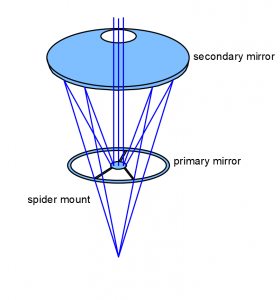A Comprehensive Guide to Reflective Optics
Reflective optics, which rely on mirrors to direct and manipulate light, play a crucial role in a wide range of fields, including astronomy, life sciences, and industrial applications. These systems offer several advantages over refractive optics, particularly in high-precision environments where laser focusing and multispectral imaging are essential.
The Basics of Reflective Optics: How Mirrors Work
At the core of reflective optics are mirrors, which are designed to reflect light. When light hits a mirror, it follows the law of reflection, meaning the angle at which the light strikes the surface is the same as the angle at which it reflects. Mirrors come in various shapes and sizes, and their effectiveness depends largely on the quality of the reflective surface and the type of coating applied.
There are two primary types of mirrors used in reflective optics, categorized by where the reflective coating is placed:
- First Surface Mirrors: In these mirrors, the coating is applied to the front surface, ensuring that light reflects off the coating before reaching the substrate. This design eliminates distortion, making it ideal for precision optical applications.
- Second Surface Mirrors: These mirrors have the reflective coating on the back of the glass or substrate. Light passes through the transparent substrate before being reflected, which helps protect the coating but may cause some image distortion, making it less suitable for high-precision tasks.
Types of Coatings in Reflective Optics
The choice of coating is critical for both the durability and performance of a mirror. Different coating methods, such as physical vapor deposition, chemical vapor deposition, and sputter deposition, are used to create highly reflective, smooth surfaces. The most common coatings include:
- Metal Coatings: Gold, silver, and aluminum are frequently used for their high reflectivity. However, these metals are prone to damage and often require protective dielectric overcoats to enhance their durability.
- Dielectric Coatings: These coatings consist of multiple thin layers of material with alternating refractive indices. Though the individual materials aren’t highly reflective, the layers work together to reflect specific wavelengths of light efficiently. Dielectric coatings are more resistant to laser damage but are typically limited to narrow spectral ranges, usually in the visible and near-infrared (NIR) regions.


A functional reflective optical system can be as straightforward as two mirrors housed within a sturdy framework
Reflective Optics vs. Refractive Optics
Reflective optics offer several distinct advantages over refractive systems, particularly for applications involving lasers and multispectral imaging.
- Dispersion-Free Performance: One of the main issues with refractive lenses is dispersion. When light passes through a lens, its speed varies depending on the wavelength, causing different wavelengths to focus at different points. Correcting this requires complex compound lenses, which are both expensive and difficult to manage over a broad spectral range. Reflective systems, on the other hand, do not suffer from dispersion, making them a simpler and more effective solution.
- Avoidance of Absorption Issues: High-powered lasers can cause significant absorption in refractive lenses, leading to heat buildup and potential damage. Reflective optics avoid this entirely by reflecting light, ensuring more reliable performance for high-power applications.
- Cost and Complexity: Designing refractive optical systems to handle multiple wavelengths often involves using many lens elements, making them more complex and expensive. Reflective systems, however, are compact, rugged, and cost-effective, requiring fewer elements to achieve the same results.
Applications and Benefits of Reflective Optics
Reflective optics are particularly useful in scenarios where high precision, minimal light absorption, and reduced distortion are critical. They are widely used in laser communications, satellite imaging, spectroscopy, and high-energy physics. These systems offer flexibility and adaptability, making them an attractive option across industries.
Because reflective optics work independently of wavelength, they can be employed in a broad range of applications without the need for the extensive modifications often required in refractive systems. Their simpler design makes them easier to manufacture, modify, and maintain.
Custom Reflective Optics
At Shanghai Optics, we offer customized reflective optics solutions tailored to meet the specific needs of various industries. With cutting-edge manufacturing technologies and advanced quality control, we ensure that each optic delivers exceptional performance. Whether you need reflective optics for laser systems, industrial imaging, or other applications, we have the expertise to provide the perfect solution.
Contact Shanghai Optics today! We’d be more than happy to discuss your projects and how to best bring them to fruition.

